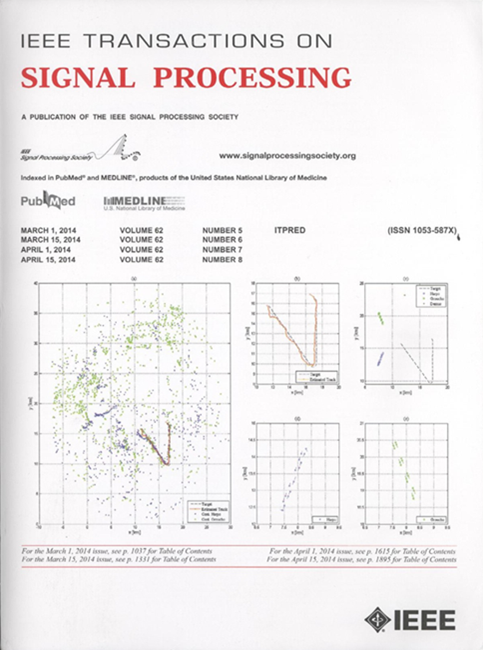越瘦越好:基于变换的张量鲁棒主成分分析
IF 5.8
2区 工程技术
Q1 ENGINEERING, ELECTRICAL & ELECTRONIC
引用次数: 0
摘要
本文利用沿张量3型的线性细变换,研究了张量鲁棒主成分分析(RPCA)。以往的工作经验表明,在低秩张量恢复中,细变换优于传统的平方变换。然而,基于小变换张量的RPCA (SRPCA)的恢复保证仍然是一个未解决的问题,因为现有的保证只适用于可逆、内积保持和自伴随变换。建立了SRPCA的恢复保证,该保证在一定条件下适用于任何三阶线性细变换。具体地说,新的张量非相干条件被推导以适应微小变换,并且也可以简化为与离散傅里叶变换相关的现有条件。我们的理论分析表明,条件数为1的细变换通过其组合平方变换对张量非相干参数具有平均效应,从而使SRPCA的恢复界比其平方变换更宽松。通过合成数据和真实数据的实验结果验证了这一见解,结果表明SRPCA比传统的基于平方变换的张量RPCA性能有所提高。本文章由计算机程序翻译,如有差异,请以英文原文为准。
Slim Is Better: Transform-Based Tensor Robust Principal Component Analysis
This paper addresses the tensor robust principal component analysis (RPCA) by employing linear slim transforms along the mode-3 of the tensor. Previous works have empirically shown the superiority of slim transforms over traditional square ones in low-rank tensor recovery. However, the recovery guarantee for the slim transform-based tensor RPCA (SRPCA) remains an unresolved issue, as existing guarantees are only applicable to invertible, inner product preserving, and self-adjoint transforms. In contrast, we establish the recovery guarantee for SRPCA that is applicable to any mode-3 linear slim transform under certain conditions. Specifically, new tensor incoherence conditions are deduced to accommodate slim transforms and can also be simplified to the existing conditions pertaining to the discrete Fourier transform. Our theoretical analysis reveals that the slim transform with a condition number of 1 enjoys an averaging effect on tensor incoherence parameters through its composing square transforms, thus leading to a more relaxed recovery bound for SRPCA compared to its square counterparts. This insight is validated through experimental results on both synthetic and real data, which demonstrate the improved performance of SRPCA over traditionally square transform-based tensor RPCA.
求助全文
通过发布文献求助,成功后即可免费获取论文全文。
去求助
来源期刊

IEEE Transactions on Signal Processing
工程技术-工程:电子与电气
CiteScore
11.20
自引率
9.30%
发文量
310
审稿时长
3.0 months
期刊介绍:
The IEEE Transactions on Signal Processing covers novel theory, algorithms, performance analyses and applications of techniques for the processing, understanding, learning, retrieval, mining, and extraction of information from signals. The term “signal” includes, among others, audio, video, speech, image, communication, geophysical, sonar, radar, medical and musical signals. Examples of topics of interest include, but are not limited to, information processing and the theory and application of filtering, coding, transmitting, estimating, detecting, analyzing, recognizing, synthesizing, recording, and reproducing signals.
 求助内容:
求助内容: 应助结果提醒方式:
应助结果提醒方式:


